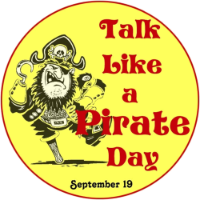
I have another chocolate for you to hunt down and try! That is, if you love the taste of chocolate and peanut butter together. Today, you’ll get insights about Justin’s Organic Milk Chocolate Peanut Butter Cups.
I found these at my local health food store, but I’ve also seen them in the health food section at Fred Meyer and once at a Target, so hopefully you can find them somewhere if you want to try them, also!
Today I wanted to review this a little differently, though. As a science/writing project, I had my kids taste and review them for us—but of course I snagged a bite, too, so I’ll add in my opinion as well!
I asked them six questions and here are their honest and unaltered answers:
*Review from my Oldest:
1. How do you like the flavor?
Not really.
2. Do they taste like other peanut butter cups?
No.
3. Use some adjectives to explain what the peanut butter cup feels like in your mouth
Soft inside and hard shell.
4. How does your mouth feel after you’ve swallowed?
Peanut buttery.
5. Would you like to eat them again, someday?
No.
6. Tell me any other thoughts you have about Justin’s Peanut Butter Cups
I would like them better if they didn’t have peanut butter in them. I really don’t know why I don’t like peanut butter.
*I knew these wouldn’t be my daughter’s favorite—she doesn’t like nuts very much! However, this was a fantastic way for her to try something not to her taste while having a very open mind about exploring the flavors . . .and also having a chance to be honest about whether she liked them or not. I will definitely be tucking this little food survey away for another time.
Review from my Youngest:
1. How do you like the flavor?
I love it!
2. Do they taste like other peanut butter cups?
No.
3. Use some adjectives to explain what the peanut butter cup feels like in your mouth
Chewy and Smooth.
4. How does your mouth feel after you’ve swallowed?
Buttery.
5. Would you like to eat them again, someday?
YES!
6. Tell me any other thoughts you have about Justin’s Peanut Butter Cups
They taste good.
Katie’s Review:
Mm-Mmmm! Unlike two people in my family, I’m with my youngest and I LOVE the Choco-Peanut Butter combo! It’s one of my favorites, really. I’ve tried Justin’s Dark Chocolate Peanut Butter Cups before and liked them, but I got the Milk Chocolate version this time and really enjoyed them as well—probably a little more.

Favorite Bits:
– The authentic peanut butter flavor is really great! It adds a salty/sweet flavor that is fantastic. The salty and sweet combo is my favorite aspect of the whole experience.
– Though these are Milk Chocolate and definitely sweeter than the Dark Chocolate ones, they aren’t too sweet. Just enough to be delicious, but not so much so that the sugar granules scratch your throat going down (winky face!)
– There is something about the much more widely known peanut butter cup that leaves a chemical aftertaste as well as a waxy lining in the mouth—not necessarily desirable! Justin’s definitely don’t do that. After eating, I mostly just had a sweet, Peanut taste in my mouth. Pretty sure that would be the ingredient list.
If you, too, love the Choco-Peanut Butter combo, I would snag a pack to try! And if you generally look for organic, more natural products, I would say that this could be a great alternative.
Have you tried Justin’s Peanut Butter Cups??? What did you think?
Note: I just picked these up because I thought they would be fun to review and didn’t receive compensation in exchange. Our opinions are honest!





